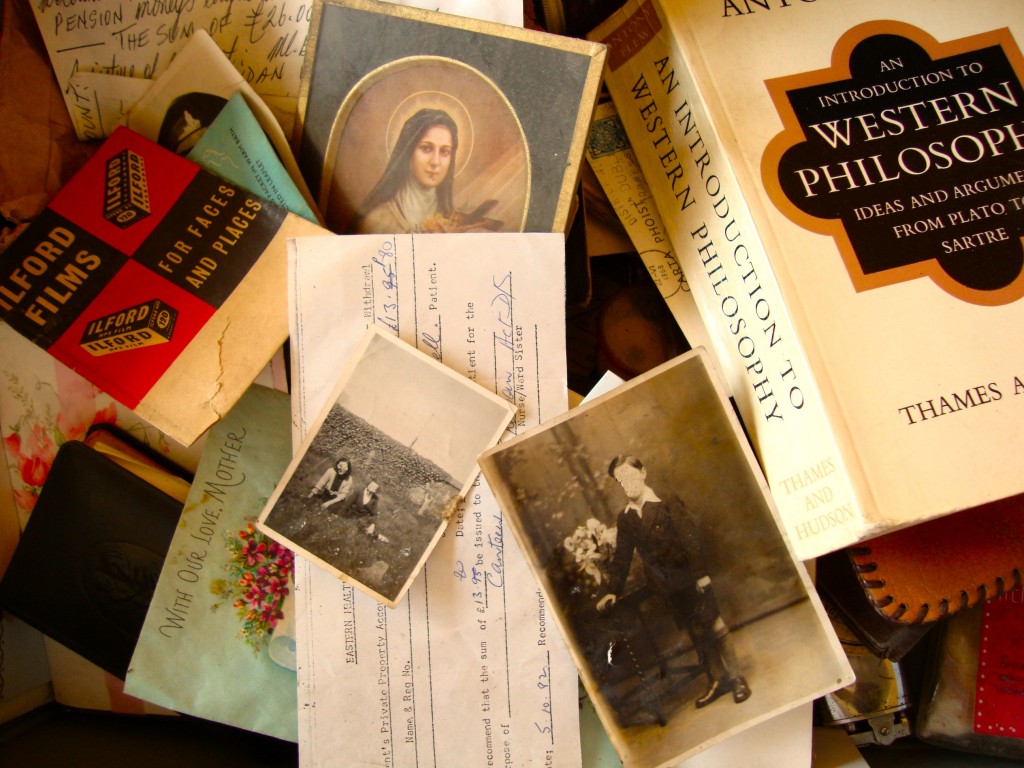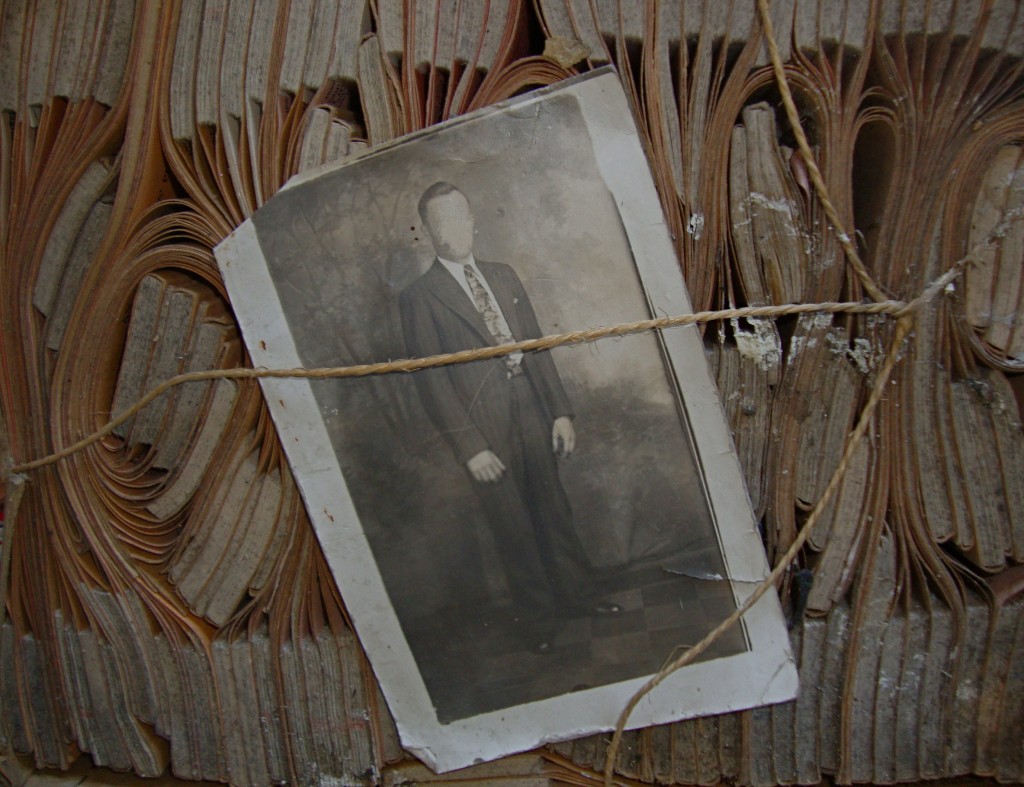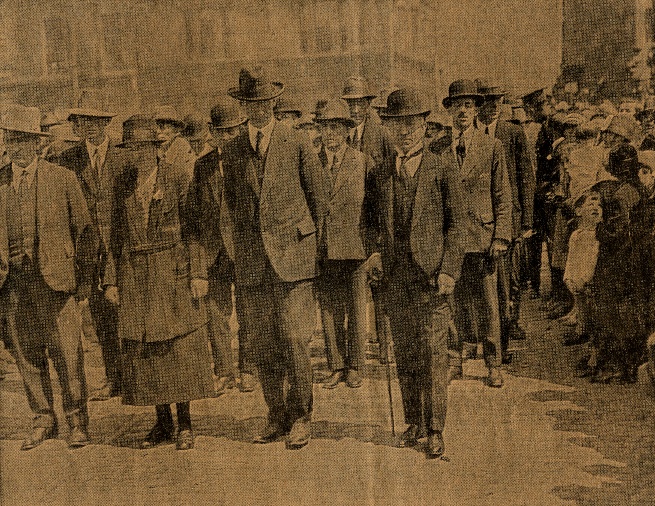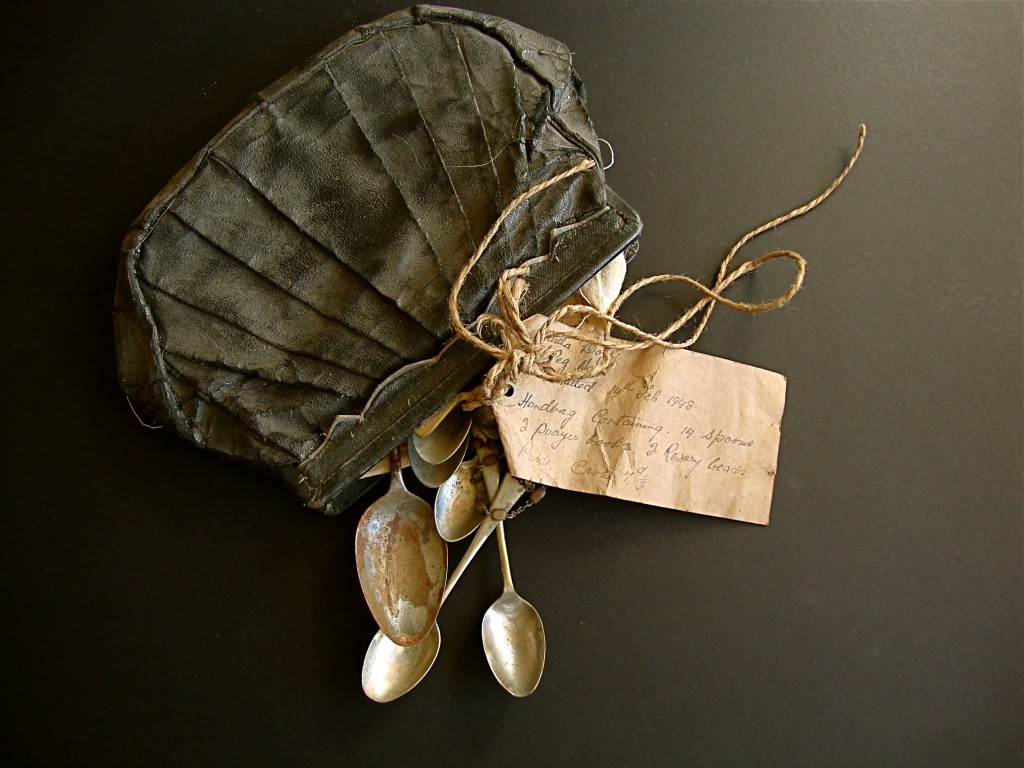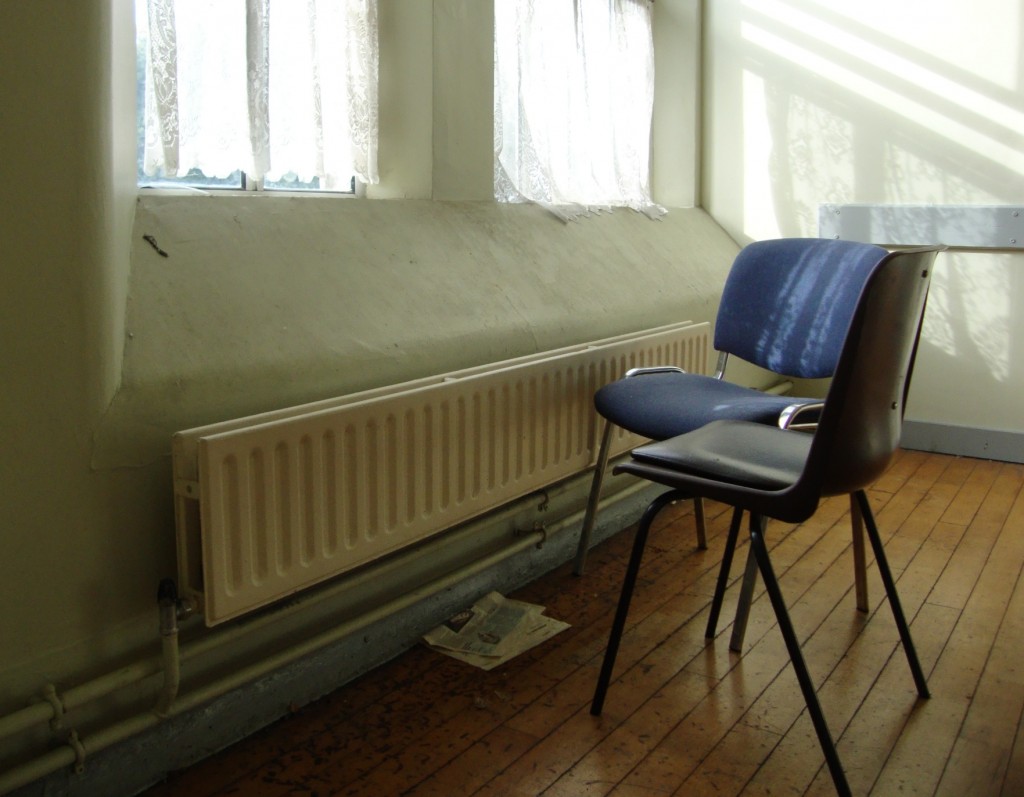PERSONAL EFFECTS: a history of possession 2012-16
Personal Effects: a History of Possession, is a work, still in process, that has grown out of an engagement with the personal effects of past patients from The Richmond Asylum – later known as St Brendans Hospital, – in Grangegorman, not far from the heart of Ireland’s capital city, Dublin. Given the provenance of these personal possessions the title should also be read to include the meaning of the effects of institutional care upon the person.
The trove of personal posessions, or effects, was discovered during the retrieval of the institution’s bound archival records from the attic of a disused hospital building. That discovery coincided with the making of a film documentary, Behind the Walls, by the late Mary Raftery, which explored the history of Ireland’s mental hospitals in the 20th century. It was by means of this documentary, first broadcast in 2011, that I learned of the existence of these personal posessions and, deeply moved by their discovery, why I set out to successfully locate them.
For twenty months, alongside members of the Grangegorman Community Museum and under the guidance of the National Archives, I sorted through the mountains of loose paper records that were also retrieved in the hospital’s attics. In the process I made a selection of memorabilia, correspondence and documents for which I received permission from the Health Service Executive to develop a response both as an artist and as a citizen.
Some of these possessions were used to create a work of art that has at its core the histories of anonymous persons who lived, and were cared for, within the institution of the hospital. Given their context these possessions remain charged objects yet with little of the strange to be found among them. They are of the everyday, suggestive of inner lives no less rich nor remarkable than our own and revelatory of stories as much about ourselves as about their owners.
These possessions have offered a remarkable trove of material for social research and artistic engagement and provided a rare opportunity for honest and truthful exploration of the complex nature of human being. The art installation, Personal Effects: a History of Possession, was created in response not only to the possessions discovered within the hospital complex but also to their possessors who were in turn possessed by the institution for the duration of their care. The work also responded to the official archival records of the Richmond Asylum, (St Brendan’s Hospital) and to the history of institutional care for the mentally ill in Ireland as a whole. It has always been a goal of the work to allow an imagination of life – both within and without the institutions – as “others” might have experienced it. It is in our ability to imagine lives other than our own that our compassion, or lack of it, is rooted. A great cultural richness is to be found within this material that might tell us much about ourselves and about our society.
The Installation of ‘Personal Effects: a History of Possession’. The installation comprised of the personal effects of past patients ( all rendered anonymous) was installed in the Long Stores of St Brendan’s Hospital site-specific exhibition in May 2014. In the context of bringing back to life some of the personal histories discovered within the old asylum this was a most appropriate location
From the ceiling of one darkened room hung a number of upended handbags and suitcases. The contents of each container was suspended as though falling to the floor. A light source from within each upended container illuminated its suspended contents below. A looped soundtrack played the recorded voices of actors reading from correspondence found within the containers, from case notes and from hospital management records.
Schedule. The first site-specific installation of the work took place during Phizzfest 2014 two hundred years and two months after the first patient was admitted to the Richmond Lunatic Asylum in Grangegorman. While based on the personal possessions of past patients of the asylum (and the mental hospital it later became), this installation, Personal Effects: a History of Possession, provided an effective and challenging experience in other spaces after its initial exhibition in the hospital building. It was also installed at Culture Box, Temple Bar, the heart of Dublin’s cultural quarter, and in the theatre space of Axis Arts Centre, Ballymun, Dublin.
THE RADIO DOCUMENTARY
The radio documentary Ghosts of Grangegorman was first broadcast on 5th September 2015 for RTE Radio One. It was co-produced by the artist and Nicoline Greer of RTE’s Documentary on One team . The documentary examined the many questions posed by the installation. In response to these questions the history of the mental hospital and of institutional care in Ireland was explored through a series of interviews with retired staff and ex patients of the institution
While rooted in the singular experience of the core installation, Personal Effects: a history of possession, this radio documentary is considered to have been the most effective medium to ensure that the remarkable past of The Richmond Asylum and of St Brendan’s Hospital, Grangegorman, along with the new services which have replaced them, has reached as wide an audience as possible.
To listen to the the radio documentary visit the link:
http: www.rte.ie/radio1/doconone/2015/0828/724138-ghosts-of-grangegorman/
The Book : The most enduring legacy of this installation, Personal Effects: a history of possession, will bear fruit in the form of a book to be published by Lilliput Press in 2017. Written by the artist, a published writer, the publication will explore and articulate that which is emotionally or viscerally expressed in the installation. It will also examine the social and political contexts that underlay the foundation and influenced the growth of institutional care in Ireland. Through a series of interviews with present and past service users, advocates for service reform, directors of mental health services in Ireland and those individuals engaged in their delivery or receipt, the publication will further examine the commitment by government agencies and politicians to depart from the institutional delivery of psychiatric care and to replace it with a community- based model of treatment and rehabilitation.
Summary
Although rooted in personal experience – in hours spent by this artist and writer within the grounds of St. Brendan’s Hospital as a child and in work as a young nurse-attendant at a European psychiatric institution – this project has brought to public attention for the first time a vast and unexplored archive remarkable for its detail of institutional management. The goal of Personal Effects: a History of Possession, has been to reveal the history of the Richmond Asylum and other institutions through the lives of those who lived within them thereby offering insight into aspects of a national and social history for too long ignored. It examined the aspirations that initially underlay the foundation of institutional care for the mentally ill in Ireland two centuries ago and asked whether those aspirations were ever fulfilled under English or Irish governance. It sought to describe the success or lack of it with which the challenges faced by the institution over two centuries were historically met. Most importantly, it has sought, through engagement with all those who seek an improvement in the provision of care, to articulate the goals and challenges that might remain when a departure from that institutional model of care for those suffering from mental illness will be finally realized.
For the most recent developments please visit the dedicated project website:
http://personaleffects.alancounihan.net
